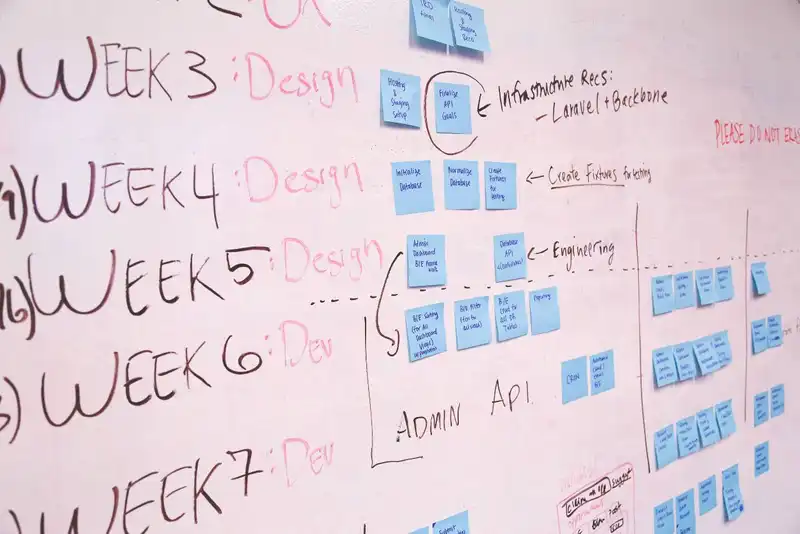Top Time Tracker Tool Features
Introduction to Time Tracker Tool
Labor costs account for a large percentage of a business's operational spending. In fact, the average labor costs for restaurant establishments make up 30-35% of total revenue. To optimize spending related to employee work hours, managers and operators need to use a time tracker tool. These solutions will provide visibility into billable hours, as well as productivity and employees' time management. Time trackers also have various features that will help organizations leverage their capabilities and resources.
Features Every Time Tracker Tool Should Have
Time tracking tools are software systems and apps that monitor employee working hours. Businesses will integrate these tools into their operations to observe productivity and ensure accurate compensation and client billing. Tracking time is important, considering 43% of employees stated that they exaggerated their work hours in a survey. When synced with other systems, time tracking solutions can also automate operational processes, such as invoicing and payroll.
Time tracking apps are generally sold via a monthly subscription. Suppliers will offer advanced features that will either be included in one plan or be sold as an add-on. Some of the best tracking features that businesses should look out for include the following.
Time Tracking
Time tracking is a fundamental feature of these monitoring tools. The functionality records every minute of an employees' working hours in real-time. The app typically allows users to log in their hours manually or set a timer for each task or shift. This feature also collects all metrics and creates timelines for activities. Management teams and leaders can utilize this information and estimate deadlines and time of project completion.
Digital Timesheet
Traditionally, managers would have to collect physical timesheets or punch cards and manually enter data into a system. However, with a digital timesheet feature, this process will be automated. Information from the time tracking function will populate into the timesheet, effectively centralizing all employees' billable hours. The online timesheet can also keep track of employee absenteeism, paid time off (PTO), sick days, and holidays. Managers can then print or download their timesheets as a PDF and send it directly to the payroll department.
Project Management

The best time tracker tools are often equipped with a project management feature. This enables users to distribute tasks, create groups, and set project deadlines. It also provides visibility into all ongoing tasks, which helps managers prioritize and ensure they complete activities by deadlines. Additionally, users can monitor the progress of their project completion by day, month, and week. Management teams can then use this information to set budgets and allocate resources.
Online Billing and Invoicing
Companies that charge their customers by the hour or minute can leverage the online billing and invoicing feature. This function will accurately track all hours worked and calculate the final bill according to billable time and rates. By optimizing this process, the brand can avoid conflicts and promote transparency.
Automated Wage Calculations
A time tracking app can also streamline wage calculations with this automated feature. Once employees clock in or out of their time clock, the data is recorded on the digital timesheet. The information is then sent to the payroll system for wage calculations. Not only does this increase accuracy in employee compensation, but it also saves managers time. With this feature, executives will not have to manually calculate their staff's hours and enter data into a spreadsheet.
Alerts and Notifications

Management teams and employees can customize their alerts on their time tracking software. For example, notifications can be sent out when staff members forget to clock in or out. It can also alert them if they missed a lunch or rest break. Project managers can send out announcements for pending tasks or when deadlines are coming up. This feature can be automated and is compatible with multiple channels, like email, text, and dashboard.
Team Management
A team management feature enables leaders and executives to create groups based on projects, teams, and departments. This simplifies the team management process because leaders can easily assign tasks to certain groups and assess their productivity. They can also generate data reports for each group and gain insight into the different workflows.
Data Reporting and Analytics
With this feature in a tracking system, managers can produce reports and data summaries associated with employee work hours. Data reports will enable executives to see the total time spent on an activity and review weekly progress statistics. This feature can also be used to analyze budgets and reduce labor costs. Typically, this capability will generate data visualizations, which are reports in the form of charts and graphs. Users can customize their own reports or employ a template provided in the feature.
Integration

An integration feature in time trackers will help businesses optimize their operations. This function enables operators to integrate their time tracking solution with their existing business software systems. For example, the time tracker can sync with payroll software to streamline compensation processes. The time tracker can also connect with an employee scheduling system to automate staffing and reduce labor costs.
Key Takeaways to Time Tracker Tool
- Time tracker tools are online systems and mobile apps that monitor employee working hours. They are used to observe productivity and ensure accurate compensation and billing.
- Time tracking solutions are usually sold by software providers via a monthly subscription. Many platforms will also include extra features in certain packages or offer them as an add-on cost.
- The best time tracking software will have many added functions. The top features operators should look out for include digital timesheets, project management, and data analytics.
- With these features, businesses can optimize their operations and enhance their growth.
